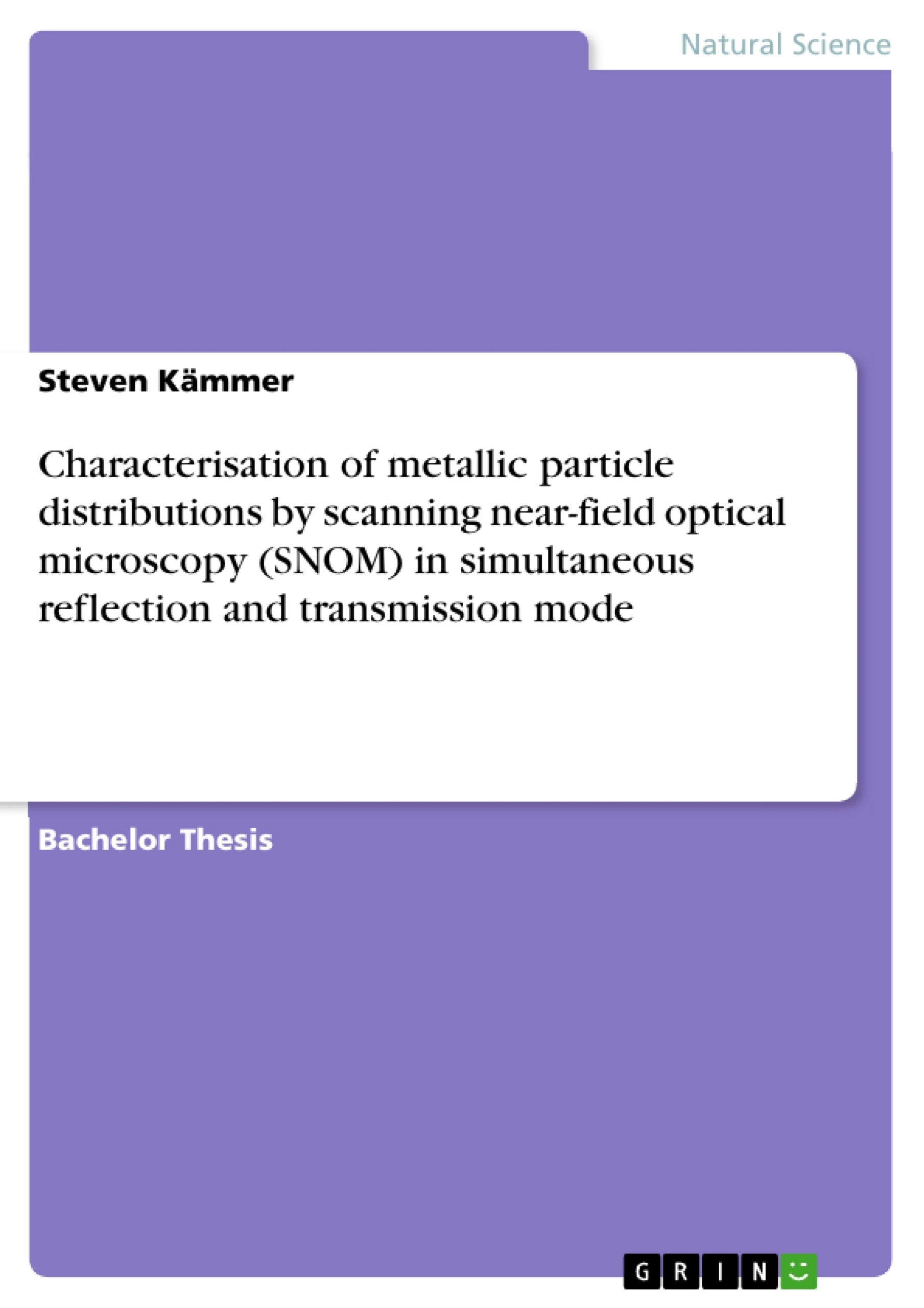Unlike conventional optics, scanning near-field optical microscopy (SNOM) overcomes the Rayleigh criterion and can therefore achieve better resolutions than conventional optical microscopes. This feature is utilized to measure the optical properties of different silver particle distributions on a glass surface. This paper mainly lays focus on intensity correction of the optical data due to topographical artifacts, analysis of plasmonic behavior and a tentative representation of the optical data.
The simple approach for optical artifact correction has been shown to yield qualitative success, with necessity of improvement for quantitative results. Given the conditions of the experiment, it has also been observed that plasmonic coupling seems to have a greater impact on the small observed particles. The tentative representation of the optics suggests that the larger particles are able to emit light by absorption of electromagnetic energy from their surrounding.
Table of Contents
- 1 Introduction
- 2 Physical Principles
- 2.1 Near and Far Field
- 2.1.1 Limitation of Far-Field Measurement
- 2.1.2 Evanescent Wave Measurement via Slit
- 2.2 Evanescent Waves and Plasmons
- 2.3 Plasmon Resonance from Theory
- 2.4 SNOM Theory
- 2.4.1 Aperture-Mode
- 2.4.2 Shear Force Feedback
- 2.5 Topographic Artifacts
- 2.1 Near and Far Field
- 3 Setup
- 4 Samples
- 5 Experimental
- 5.1 Preparation of Measurement
- 5.2 Measurement Procedure
- 5.3 Calibration and Tip Properties
- 5.4 Results
- 6 Discussion
- 6.1 Optical Correction by Height
- 6.2 Correlation between Topography & Near-Field Optics
- 6.3 Analysis of Contractive Effects - Emission / Absorption
- 7 Summarizing Conclusion
- 8 Outlook
Objectives and Key Themes
This bachelor thesis explores the characterization of metallic particle distributions using scanning near-field optical microscopy (SNOM) in simultaneous reflection and transmission mode. It aims to demonstrate the capabilities of SNOM in resolving the optical properties of metallic particles beyond the diffraction limit of conventional light microscopy. The work delves into the fundamental physical principles governing near-field optics, including the concepts of evanescent waves and plasmon resonance.
- Near-field optics and its application to nanoscale imaging
- The role of evanescent waves and plasmon resonance in near-field interactions
- The theory and practical implementation of SNOM in aperture mode with shear force feedback
- Experimental characterization of metallic particle distributions using SNOM
- Analysis and interpretation of SNOM data, including optical correction and correlation with topography
Chapter Summaries
- Chapter 1 provides an introduction to the topic of near-field optics and its application in characterizing metallic particle distributions. It outlines the limitations of conventional far-field microscopy and introduces the concept of SNOM as a powerful tool for nanoscale imaging.
- Chapter 2 delves into the fundamental physical principles governing near-field optics. It discusses the concepts of near and far fields, evanescent waves, and plasmon resonance. The theory of SNOM in aperture mode with shear force feedback is presented, along with a discussion of topographic artifacts.
- Chapter 3 describes the experimental setup used for SNOM measurements, including the details of the aperture tip, shear force feedback mechanism, and sample preparation techniques.
- Chapter 4 provides a description of the samples used in the experiments, focusing on their properties and characteristics relevant to near-field imaging.
- Chapter 5 details the experimental procedures employed, including the steps involved in sample preparation, measurement procedures, and calibration of the SNOM instrument. It also includes a discussion of the tip properties and their influence on data acquisition.
- Chapter 6 presents the results obtained from the SNOM measurements and their analysis. This chapter focuses on the optical correction of SNOM data, the correlation between topography and near-field optics, and the analysis of contractive effects related to emission and absorption.
Keywords
The key topics and concepts explored in this thesis include scanning near-field optical microscopy (SNOM), evanescent waves, plasmon resonance, metallic nanoparticles, aperture mode, shear force feedback, topographic artifacts, optical correction, and nanoscale imaging.
- Arbeit zitieren
- Steven Kämmer (Autor:in), 2014, Characterisation of metallic particle distributions by scanning near-field optical microscopy (SNOM) in simultaneous reflection and transmission mode, München, GRIN Verlag, https://www.grin.com/document/281073



